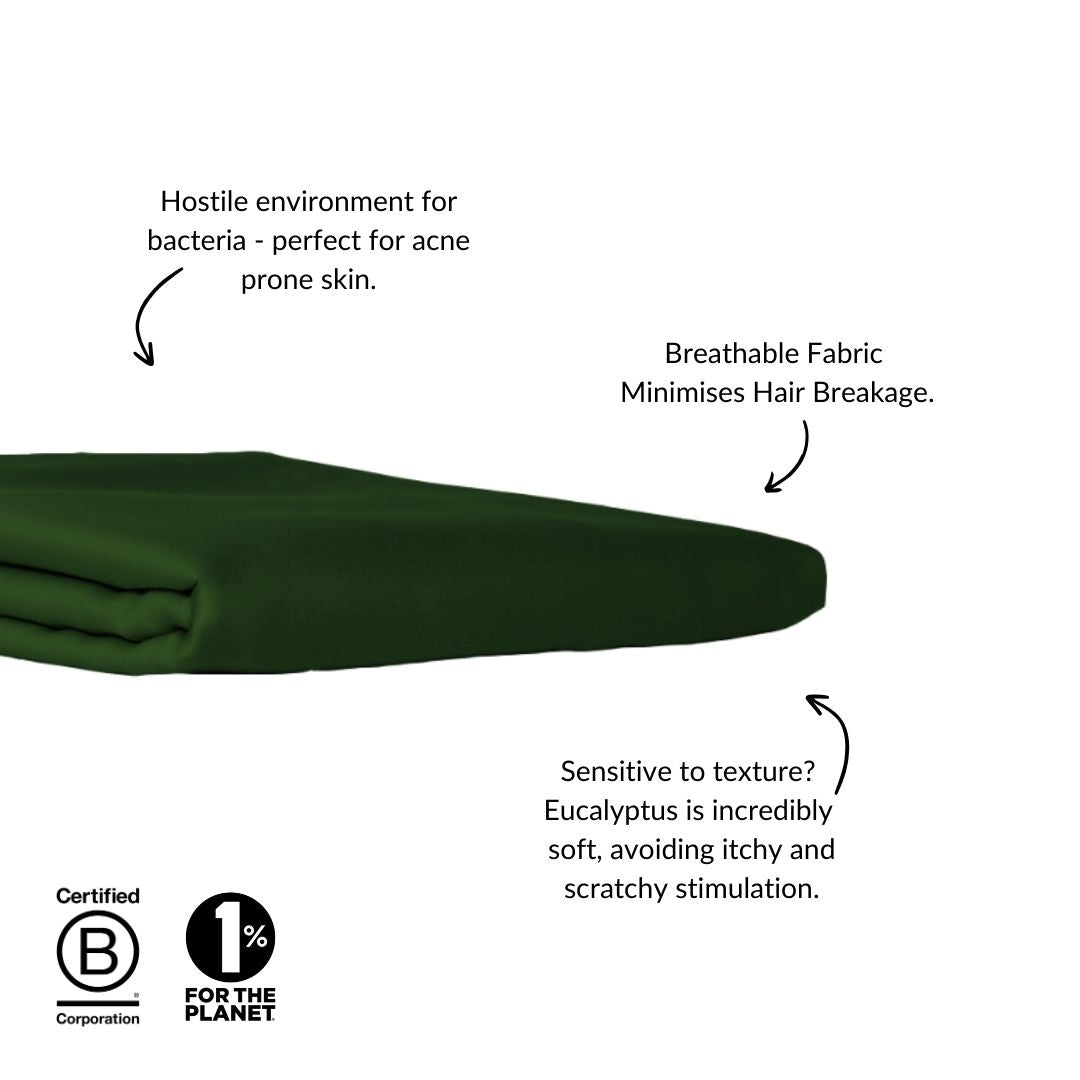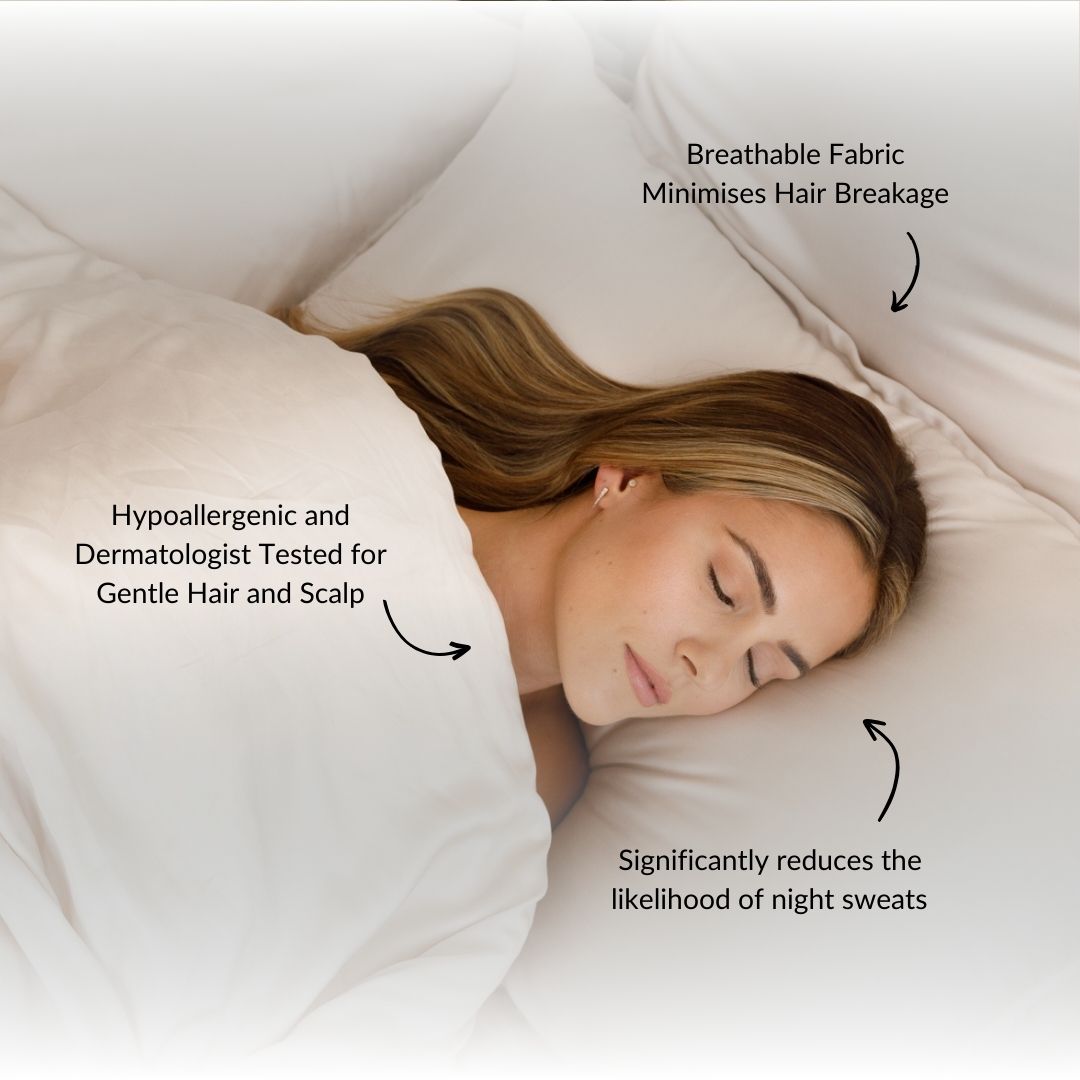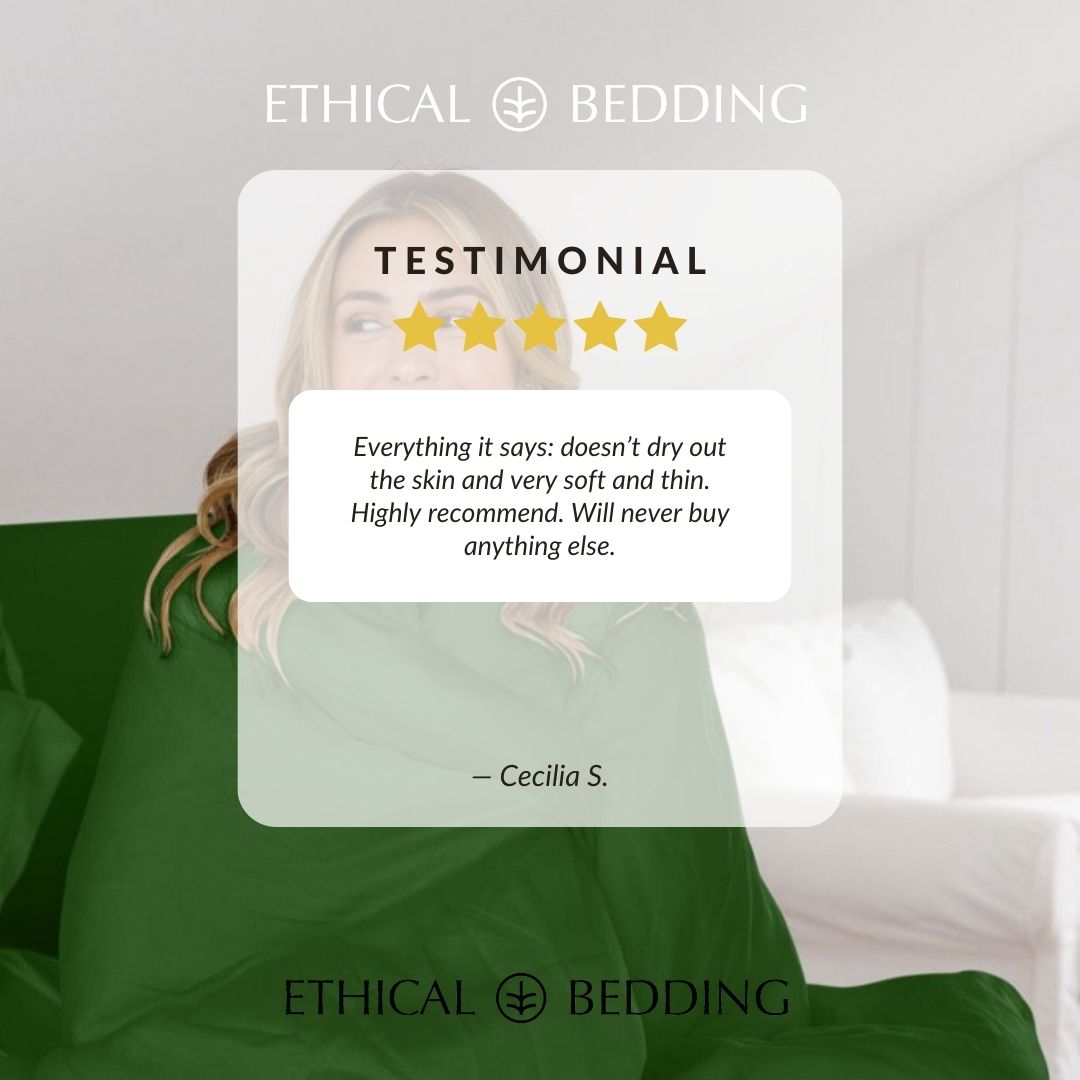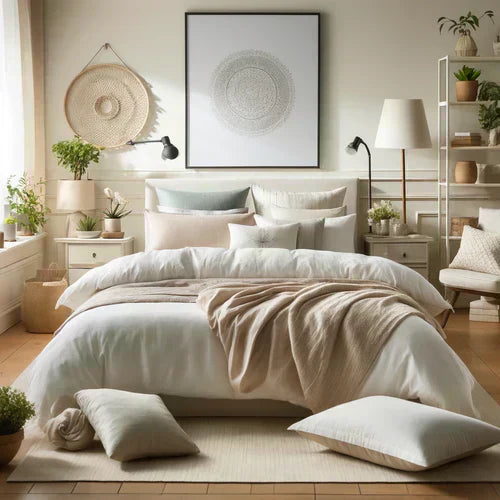Table of Contents
- Understanding Allergens in Bedding
- Hypoallergenic Bedding Materials
- Hypoallergenic Bedding Products
- Tips for Maintaining an Allergy-Free Bed
- Choose The Best Hypoallergenic Bedding
Hello, allergy warriors! If you find yourself waking up with itchy eyes, a runny nose, or sneezing fits, your bedding might be to blame. Choosing the right hypoallergenic bedding can make a significant difference in reducing allergy symptoms and improving your sleep quality. In this article, we'll explore the best bedding options for allergy sufferers and how to create an allergy-free sleep environment. Ready to breathe easy and sleep soundly? Let's dive in!
Understanding Allergens in Bedding
Allergens are substances that can cause allergic reactions. Common allergens found in bedding include:
- Dust Mites: These tiny creatures thrive in warm, humid environments and feed on dead skin cells. They are a common cause of allergies.
- Mold and Mildew: Moisture can lead to the growth of mold and mildew, which can trigger allergic reactions.
- Pet Dander: If you share your bed with pets, their dander (tiny flakes of skin) can accumulate in your bedding and cause allergies.
- Pollen: Pollen can cling to your clothes and hair and end up in your bed, causing nighttime allergy symptoms.
Hypoallergenic Bedding Materials
Choosing hypoallergenic bedding materials can help reduce exposure to allergens and improve your sleep quality. Here are some of the best options:
1. Organic Cotton
Organic cotton is grown without synthetic pesticides or fertilizers, making it a healthier choice for allergy sufferers. It’s also breathable and easy to wash, which helps keep allergens at bay.
2. Bamboo
Bamboo bedding is naturally hypoallergenic, moisture-wicking, and resistant to dust mites and mold. It’s also incredibly soft and breathable, providing a comfortable sleep environment.
Explore our Bamboo Bedding Collection for sustainable and hypoallergenic sheets and duvet covers.

3. Tencel (Eucalyptus)
Tencel is made from eucalyptus fibers and is known for its hypoallergenic properties. It’s also moisture-wicking and breathable, helping to keep your bed dry and free from allergens.
Check out our Tencel Bedding Collection for silky-smooth and hypoallergenic bedding.

4. Wool
Wool is naturally resistant to dust mites and mold, making it an excellent choice for allergy sufferers. It’s also breathable and moisture-wicking, providing a comfortable sleep environment year-round.
Hypoallergenic Bedding Products
Here are some hypoallergenic bedding products to consider:
1. Mattress Protectors
A high-quality mattress protector can create a barrier between you and allergens like dust mites and pet dander. Look for protectors made from hypoallergenic materials and ensure they are breathable and easy to wash.
Check out our guide on How to Wash and Care for Your Bamboo Sheets for tips on maintaining hypoallergenic bedding.
2. Pillow Protectors
Pillow protectors work similarly to mattress protectors, creating a barrier between your pillow and allergens. They help extend the life of your pillows and keep them free from dust mites and other allergens.
3. Hypoallergenic Pillows
Choose pillows made from hypoallergenic materials like memory foam, latex, or down alternative. These materials are less likely to harbor allergens and provide excellent support and comfort.
4. Hypoallergenic Comforters and Duvets
Look for comforters and duvets filled with hypoallergenic materials like down alternative, wool, or synthetic fibers. These fillings are less likely to cause allergic reactions and provide warmth and comfort.
Tips for Maintaining an Allergy-Free Bed
In addition to choosing hypoallergenic bedding, here are some tips to help maintain an allergy-free sleep environment:
1. Wash Bedding Regularly
Wash your sheets, pillowcases, and other bedding at least once a week in hot water to kill dust mites and remove allergens. Use a gentle, hypoallergenic detergent to avoid skin irritation.
2. Keep Pets Off the Bed
As much as you love your furry friends, keeping them off your bed can help reduce exposure to pet dander. Provide a comfortable pet bed in your bedroom instead.
3. Reduce Humidity
Dust mites and mold thrive in humid environments. Use a dehumidifier or air conditioner to keep the humidity levels in your bedroom below 50%.
4. Vacuum and Dust Regularly
Vacuum your bedroom carpet and upholstery regularly to remove dust and allergens. Use a vacuum cleaner with a HEPA filter for the best results. Dust surfaces with a damp cloth to prevent allergens from becoming airborne.
5. Use Allergen-Proof Covers
Cover your mattress, pillows, and comforters with allergen-proof covers to create a barrier between you and allergens. These covers are designed to be breathable and comfortable while keeping allergens out.
Choose The Best Hypoallergenic Bedding
Choosing hypoallergenic bedding and maintaining an allergy-free sleep environment can significantly improve your sleep quality and overall health. By opting for materials like organic cotton, bamboo, Tencel, and wool, you can create a comfortable and allergen-free bed. Don’t forget to wash your bedding regularly, keep pets off the bed, and reduce humidity to keep allergens at bay.
Ready to upgrade your bedding? Explore our Bamboo Bedding Collection to find the perfect hypoallergenic bedding for your needs.
 |
 |
FAQ
What is hypoallergenic bedding?
Hypoallergenic bedding is designed to reduce exposure to allergens, such as dust mites, mould and mildew, pet dander, or pollen. Often, such bedding is made from natural materials like organic cotton, bamboo, eucalyptus, or wool that possess anti-bacterial and anti-dust properties.
Do hypoallergenic sheets prevent dust mites?
Yes, hypoallergenic sheets and bedding are effective in preventing dust mites, due to the tightly woven fibres blocking them and resisting their growth.
What’s the difference between hypoallergenic bedding and anti-allergy bedding?
Hypoallergenic bedding reduces exposure to allergens, while anti-allergy bedding is specifically treated to neutralise allergens.
Sources:
- Hypoallergenic bedding and allergy symptoms
https://www.nejm.org/doi/full/10.1056/nejmoa023171 - Dust mites
https://mft.nhs.uk/app/uploads/sites/7/2018/04/House_dust_mite_avoidance.pdf - Mould and mildew
https://www.nhsinform.scot/healthy-living/indoor-health/damp-and-mould-indoors - Pet dander
https://www.ouh.nhs.uk/patient-guide/leaflets/files/86052Pallergy.pdf - Pollen allergy
https://www.nhs.uk/conditions/hay-fever/




Share:
The History of Bedding: From Ancient Times to Modern Day
Eco-Friendly Mattress Options: Choosing Sustainable Comfort